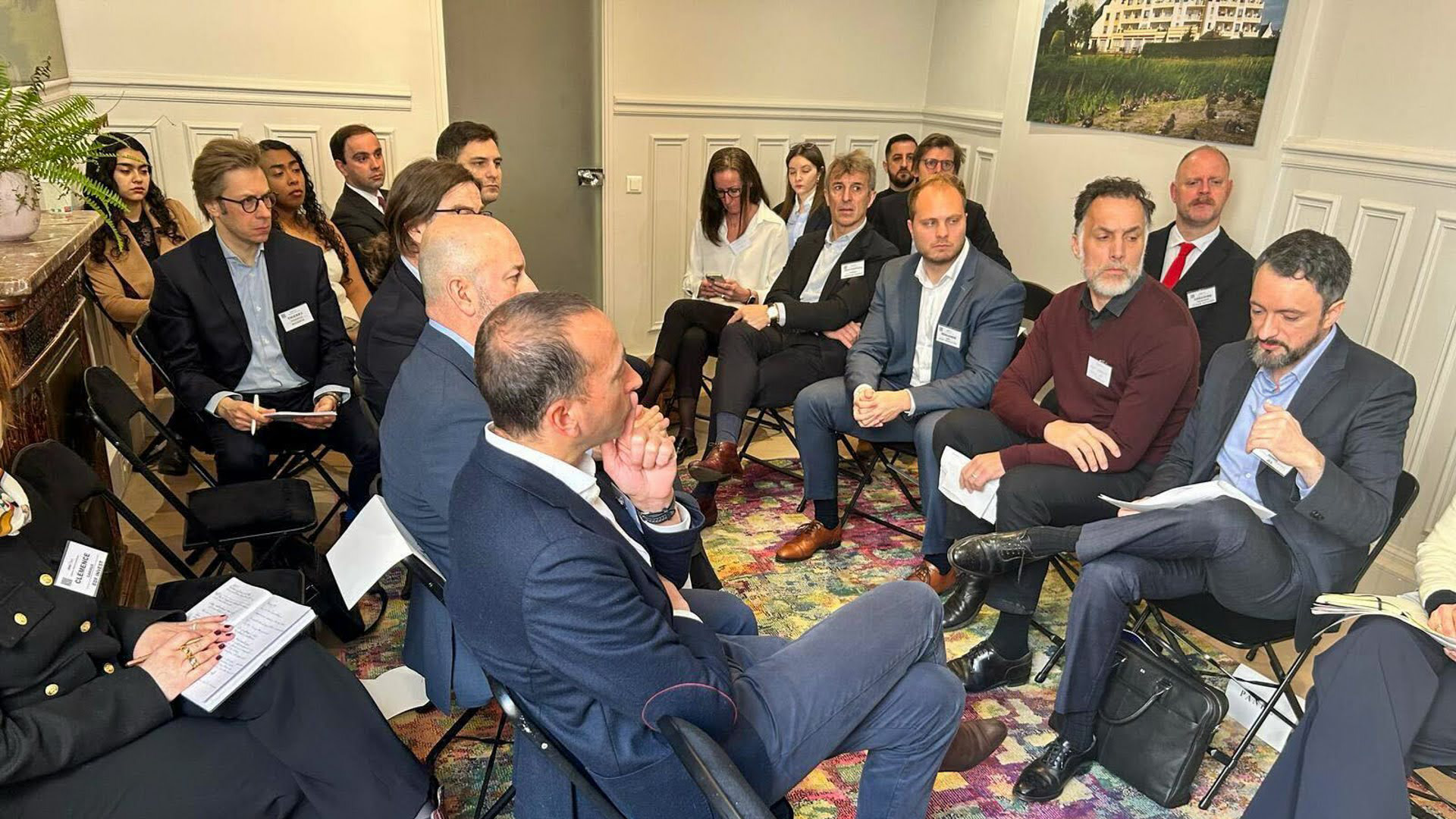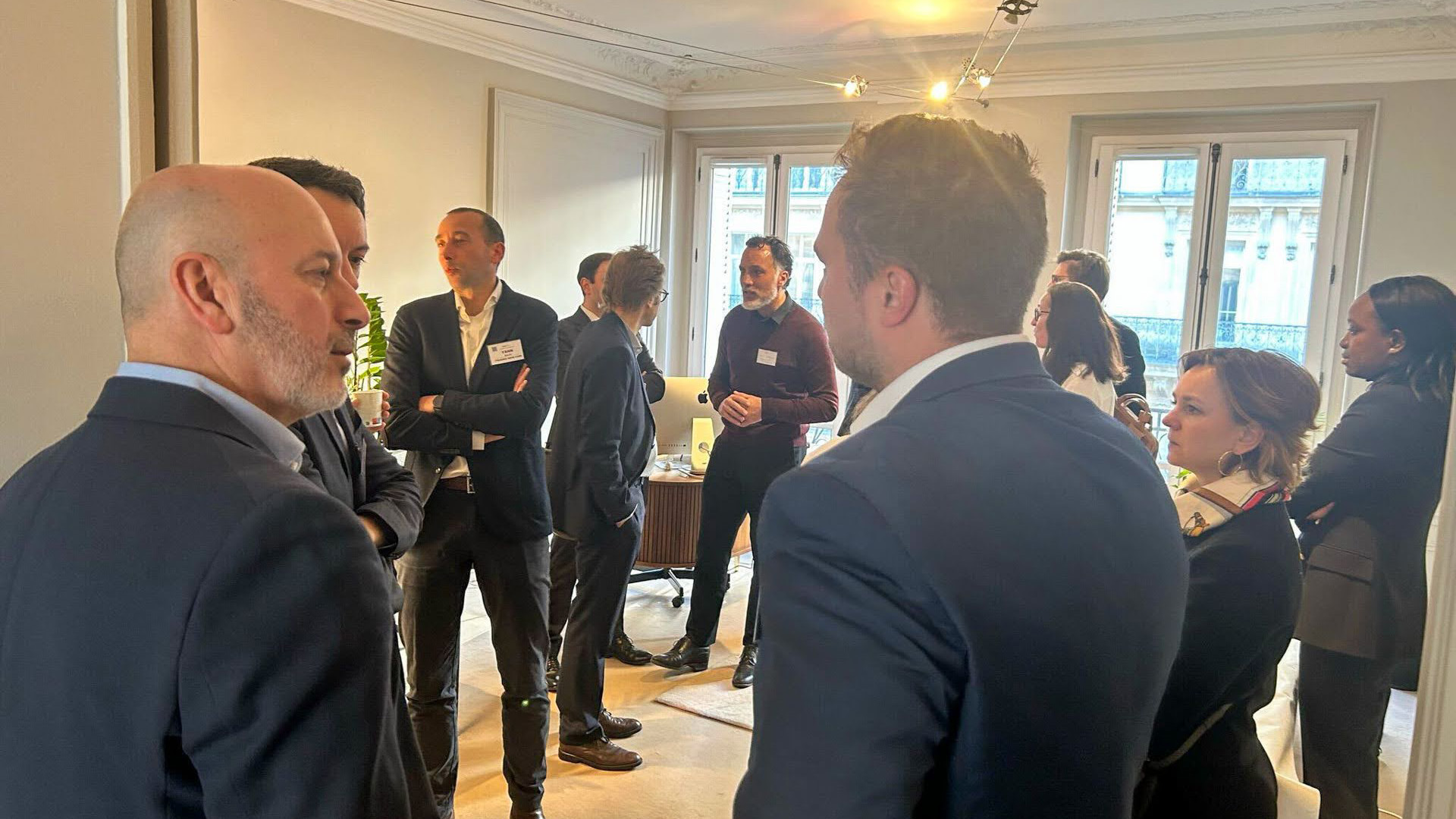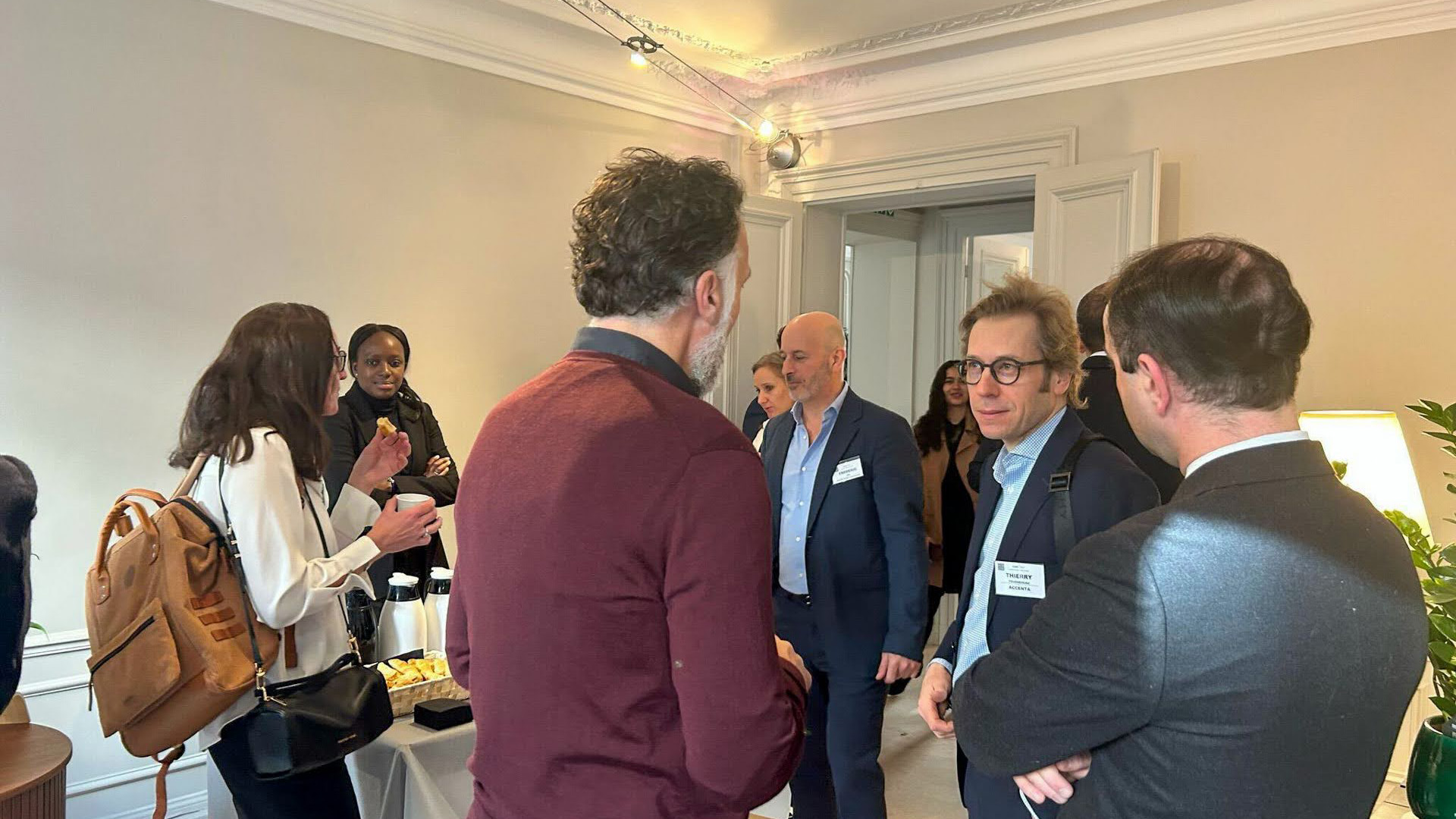 Credit: Adobe Stock
Credit: Adobe StockEuropean Healthcare Real Estate: Resilient Fundamentals Amid Market Caution
MoZaïC AM reveals key takeaways and insights from exclusive GRI Club discussions on Europe’s Healthcare real estate sector
May 7, 2025Real Estate
Written by Ekaterina Quenelle (MoZaïC AM)
The European healthcare real estate sector is experiencing a slower recovery than other alternative asset classes in the wake of economic shocks from the COVID-19 pandemic and rising interest rates.
Despite the sector’s long-term appeal and demographic tailwinds, several structural and operational factors are hindering a full rebound.
Price adjustment mechanisms, operator dynamics, regulatory environments, and investment models were among the discussion topics when industry leaders gathered at GRI Club’s recent European Healthcare Real Estate meeting in Paris, co-hosted by MoZaïC Asset Management.

European investment volumes in the sector have declined by 28% year-on-year, a sign of continued investor caution despite robust long-term fundamentals.
A key factor behind the lagging recovery is insufficient price adjustment in the healthcare real estate segment. Investors remain attracted to the long leases and resilient cash flows that characterise healthcare assets, but transaction volumes are stagnant due to a persistent pricing mismatch.
Unlike asset classes such as logistics or residential, healthcare portfolios have been slow to reflect market factors.
The UK’s lease structures, flexible labour markets, and investor-friendly regulatory frameworks have attracted substantial international capital - particularly from North America, which accounted for 40% of UK healthcare real estate investments in 2024.
Additionally, UK operators demonstrated better financial resilience, enabled by private pay models that allow for inflationary cost pass-throughs. Rent coverage ratios for listed UK REITs exceed 2.0x, a significantly healthier level than those observed in continental Europe.
However, this rental growth has only partially compensated for interest rate rises, leading some investors to question operators’ ability to sustain rent payments amidst rising operational expenses, as margins in some European countries remain below pre-COVID levels; unlike in the UK, where margins have recovered and surpassed 2019 benchmarks.

Conversely, the UK has maintained regulatory stability, contributing to its stronger investment profile. For investors, regulatory clarity and consistency are vital - uncertainty in this area can stall transactions, impair asset values, and deter cross-border capital.
Structures that misalign incentives - such as traditional leases where landlords have no control over care standards - expose investors to downside risks without governance tools.
Forward-thinking investors and specialised asset managers mitigate this by embedding operational KPIs, quality audits, and transparency clauses into contracts. Ownership models such as management contracts or hybrid leases allow for deeper collaboration, albeit with increased exposure to operational risk.
The Orpea scandal in France highlighted the reputational and operational risks associated with insufficient transparency and oversight. Investors have since become more cautious, demanding better visibility into daily operations, care standards, and financial health.
A shortage of new developments, particularly in France and Germany, has compounded the issue by creating pressure on existing stock.
With construction stagnating and demand rising, occupancy rates are climbing - but so are the expectations for top-quality performance.

The sector still lacks standardised reporting frameworks; In the UK, the Care Quality Commission (CQC) has improved visibility, but such tools are not yet harmonised across Europe.
Digital care plans and internal audit systems are emerging as value drivers, enabling more accurate monitoring of service quality and better operator oversight. However, adoption remains uneven.
Specialised asset managers like MozaïC AM have developed an offering that helps alleviate those concerns by providing a thorough evaluation based on documentation review and on-site visits.
Some investors argue that leases only provide superficial protection. If an operator fails, the landlord suffers - regardless of lease terms.
Conversely, vertically integrated models, where investors control operations, offer optionality at exit and the ability to rebase performance during the hold period. However, such strategies require deep sector expertise and larger platforms to scale effectively.
Relationships matter: having a scale with an operator increases bargaining power and visibility. Investors must evaluate each market’s legal framework - while termination clauses may be enforceable in the UK or Germany, France’s labour and tenancy laws may limit flexibility.
Operators using digital tools are better equipped to demonstrate quality, optimise staffing, and deliver personalised care.
For investors, this translates into higher tenant satisfaction, lower risk, and better long-term value. The challenge lies in funding these investments, especially under traditional leases where landlords have limited incentives or mechanisms to support operator innovation.

In healthcare, their use remains limited due to regulatory complexity and heightened liability. Still, such structures may gain traction in senior living or markets like the UK and Germany, allowing more flexible, performance-linked relationships.
The challenge is ensuring operators have enough skin in the game to maintain standards and mitigate downside risk.
Notably, more opportunistic and value-add strategies are emerging alongside traditional core investments. This fuels innovation, pressure for transparency, and structural evolution in deal formats.
Investors that proactively engage with operators push for transparency, and embrace flexible investment structures will be best positioned to capture value.
In a maturing market, the winners will be those who go beyond owning buildings - they will shape the care ecosystem itself.
Ekaterina Quenelle is the Director of Fundraising and Institutional Clients at MoZaïC Asset Management.
MoZaïC Asset Management is an EU specialist in sustainable healthcare real estate, an independent player advising on about EUR 380 million in European social and care infrastructure for direct investors, and a discretionary fund manager.
The European healthcare real estate sector is experiencing a slower recovery than other alternative asset classes in the wake of economic shocks from the COVID-19 pandemic and rising interest rates.
Despite the sector’s long-term appeal and demographic tailwinds, several structural and operational factors are hindering a full rebound.
Price adjustment mechanisms, operator dynamics, regulatory environments, and investment models were among the discussion topics when industry leaders gathered at GRI Club’s recent European Healthcare Real Estate meeting in Paris, co-hosted by MoZaïC Asset Management.

The meeting brought together institutional investors and asset managers to discuss the ways to unlock value and drive sustainable growth in the European healthcare real estate sector. (GRI Club)
Price Adjustment Pace
While asset classes such as logistics, hospitality, and traditional housing have begun to rebound from the macroeconomic shocks of 2022 and 2023, healthcare real estate is experiencing a more muted recovery.European investment volumes in the sector have declined by 28% year-on-year, a sign of continued investor caution despite robust long-term fundamentals.
A key factor behind the lagging recovery is insufficient price adjustment in the healthcare real estate segment. Investors remain attracted to the long leases and resilient cash flows that characterise healthcare assets, but transaction volumes are stagnant due to a persistent pricing mismatch.
Unlike asset classes such as logistics or residential, healthcare portfolios have been slow to reflect market factors.
UK Market Maturity and Recovery
The UK remains a standout in the HCRE landscape, with transaction volumes exceeding the five-year average, largely due to structural flexibility, transparency, and a business-friendly environment.The UK’s lease structures, flexible labour markets, and investor-friendly regulatory frameworks have attracted substantial international capital - particularly from North America, which accounted for 40% of UK healthcare real estate investments in 2024.
Additionally, UK operators demonstrated better financial resilience, enabled by private pay models that allow for inflationary cost pass-throughs. Rent coverage ratios for listed UK REITs exceed 2.0x, a significantly healthier level than those observed in continental Europe.
Inflation - A Double-Edged Sword
Inflation has had a mixed impact on the sector. While on the one hand, increased costs - particularly staffing and energy - have eroded operators’ margins across Europe, on the other, higher inflation has driven nominal rental income growth where index-linked leases are in place.However, this rental growth has only partially compensated for interest rate rises, leading some investors to question operators’ ability to sustain rent payments amidst rising operational expenses, as margins in some European countries remain below pre-COVID levels; unlike in the UK, where margins have recovered and surpassed 2019 benchmarks.

Unlike asset classes such as logistics or residential, healthcare portfolios have been slow to reflect market factors. (Adobe Stock)
Unlocking Investor Confidence
Recent regulatory changes in Europe, especially in markets like Germany, Finland and Spain, have created uncertainty in the healthcare space, with changes to staffing ratios in Finland, for instance, rendering many care homes unprofitable for extended periods.Conversely, the UK has maintained regulatory stability, contributing to its stronger investment profile. For investors, regulatory clarity and consistency are vital - uncertainty in this area can stall transactions, impair asset values, and deter cross-border capital.
Critical Risk Variables
The quality of care and alignment between operators and investors are paramount. Operators’ willingness and ability to deliver high-quality services affect both occupancy and reputational risk.Structures that misalign incentives - such as traditional leases where landlords have no control over care standards - expose investors to downside risks without governance tools.
Forward-thinking investors and specialised asset managers mitigate this by embedding operational KPIs, quality audits, and transparency clauses into contracts. Ownership models such as management contracts or hybrid leases allow for deeper collaboration, albeit with increased exposure to operational risk.
Nursing Homes Challenges
Nursing homes present unique challenges due to their labour-intensive nature and heightened regulatory oversight.The Orpea scandal in France highlighted the reputational and operational risks associated with insufficient transparency and oversight. Investors have since become more cautious, demanding better visibility into daily operations, care standards, and financial health.
A shortage of new developments, particularly in France and Germany, has compounded the issue by creating pressure on existing stock.
With construction stagnating and demand rising, occupancy rates are climbing - but so are the expectations for top-quality performance.

Structures that misalign incentives can expose investors to downside risks without governance tools. (GRI Club)
Transparency and Reputation
Many European operators remain reluctant to share detailed operational data with landlords, often citing competitive concerns. This opacity makes underwriting risk difficult, particularly in sale-leaseback structures.The sector still lacks standardised reporting frameworks; In the UK, the Care Quality Commission (CQC) has improved visibility, but such tools are not yet harmonised across Europe.
Digital care plans and internal audit systems are emerging as value drivers, enabling more accurate monitoring of service quality and better operator oversight. However, adoption remains uneven.
Specialised asset managers like MozaïC AM have developed an offering that helps alleviate those concerns by providing a thorough evaluation based on documentation review and on-site visits.
Operational Exposure
Owning operations, rather than merely leasing real estate, gives investors control over outcomes and quality - but it also increases risk.Some investors argue that leases only provide superficial protection. If an operator fails, the landlord suffers - regardless of lease terms.
Conversely, vertically integrated models, where investors control operations, offer optionality at exit and the ability to rebase performance during the hold period. However, such strategies require deep sector expertise and larger platforms to scale effectively.
Beyond Passive Ownership
To create value, real estate investors must become more proactive. This includes engaging with operators on capex planning, embedding ESG metrics, and insisting on granular operational reporting.Relationships matter: having a scale with an operator increases bargaining power and visibility. Investors must evaluate each market’s legal framework - while termination clauses may be enforceable in the UK or Germany, France’s labour and tenancy laws may limit flexibility.
Digitalisation: A Strategic Imperative
Investments in technology - particularly in digital care plans, real-time monitoring, and data analytics - are proving vital in the European healthcare sector.Operators using digital tools are better equipped to demonstrate quality, optimise staffing, and deliver personalised care.
For investors, this translates into higher tenant satisfaction, lower risk, and better long-term value. The challenge lies in funding these investments, especially under traditional leases where landlords have limited incentives or mechanisms to support operator innovation.

Despite near-term headwinds, the European healthcare sector’s fundamentals remain robust. (GRI Club)
Management Contracts vs Leases
Management contracts are emerging as a potential alternative to traditional leases. Common in hospitality, these agreements give owners control while contracting operations to third-party managers.In healthcare, their use remains limited due to regulatory complexity and heightened liability. Still, such structures may gain traction in senior living or markets like the UK and Germany, allowing more flexible, performance-linked relationships.
The challenge is ensuring operators have enough skin in the game to maintain standards and mitigate downside risk.
Global Capital Flows: A Tailwind for Transformation
New capital is flowing into European healthcare real estate from the Americas, Asia, and the Middle East. Investors are seeking yield, diversification, and exposure to a demographically resilient sector.Notably, more opportunistic and value-add strategies are emerging alongside traditional core investments. This fuels innovation, pressure for transparency, and structural evolution in deal formats.
Fundamentally Positive Outlook
Despite near-term headwinds, the sector’s fundamentals remain robust. Aging populations, rising care needs, and under-investment in modern facilities point to long-term demand growth.Investors that proactively engage with operators push for transparency, and embrace flexible investment structures will be best positioned to capture value.
In a maturing market, the winners will be those who go beyond owning buildings - they will shape the care ecosystem itself.
Ekaterina Quenelle is the Director of Fundraising and Institutional Clients at MoZaïC Asset Management.
MoZaïC Asset Management is an EU specialist in sustainable healthcare real estate, an independent player advising on about EUR 380 million in European social and care infrastructure for direct investors, and a discretionary fund manager.